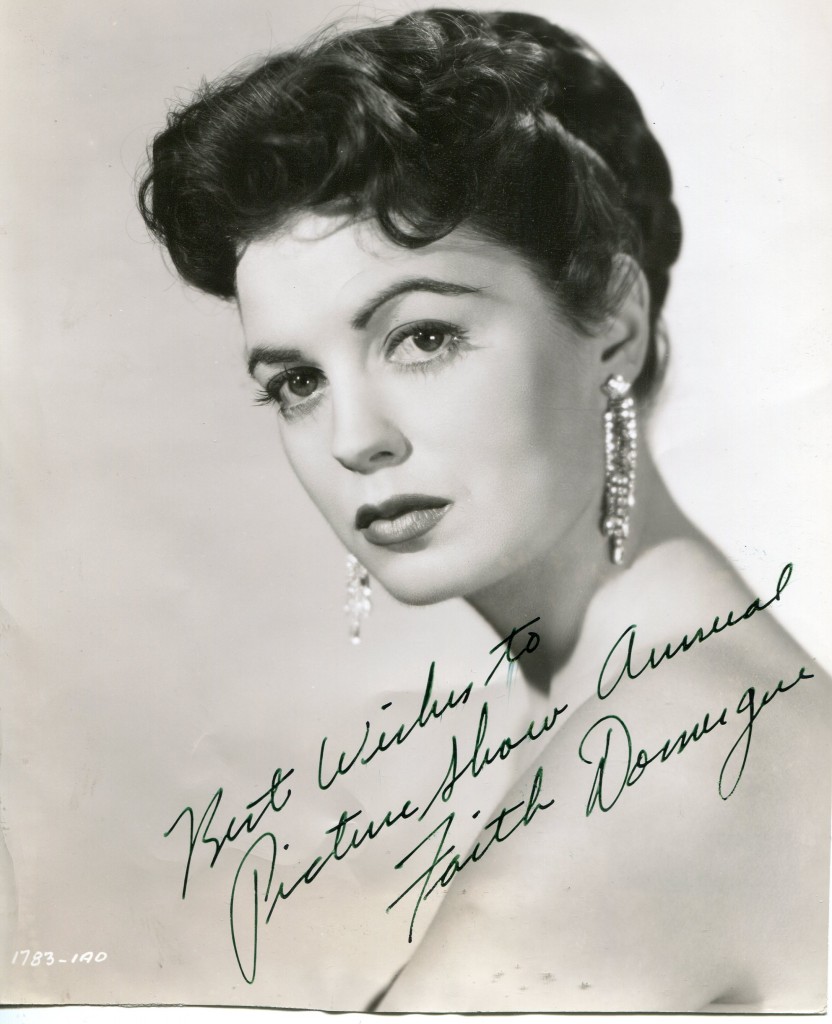
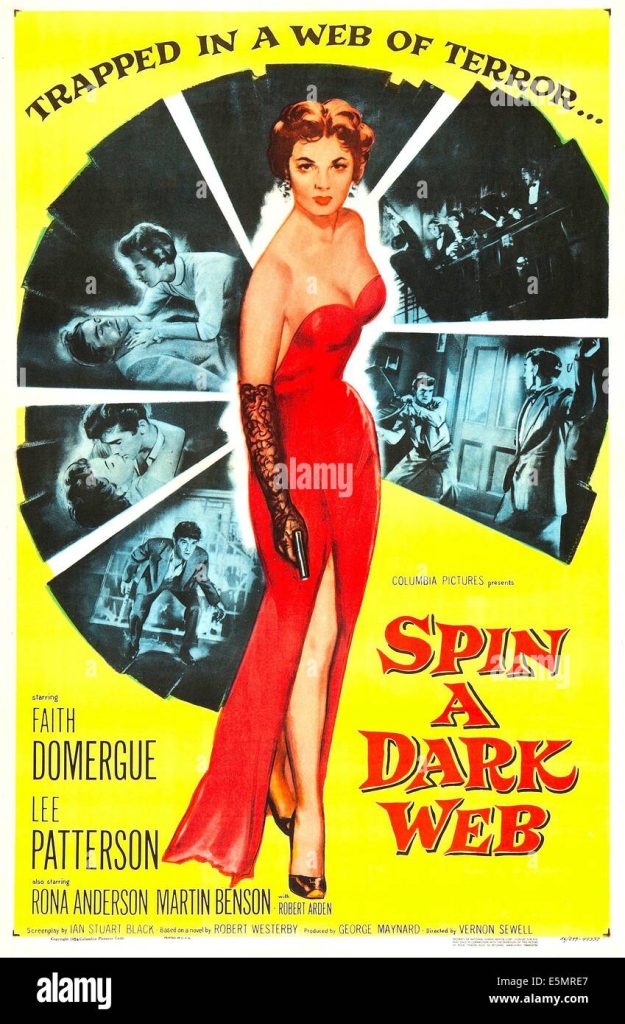
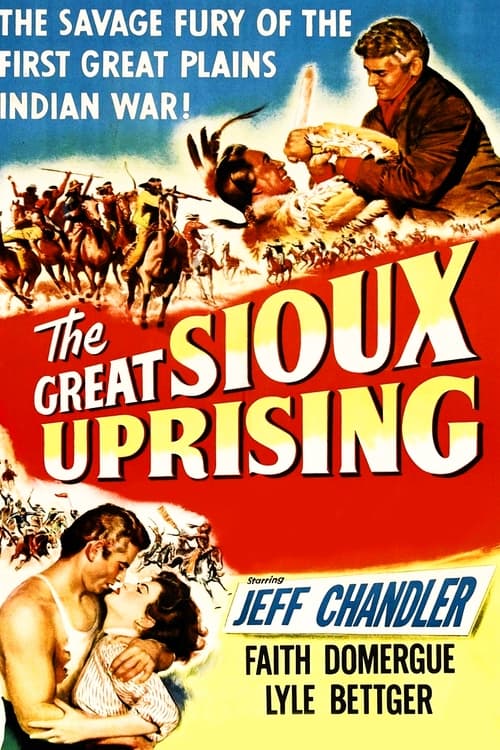
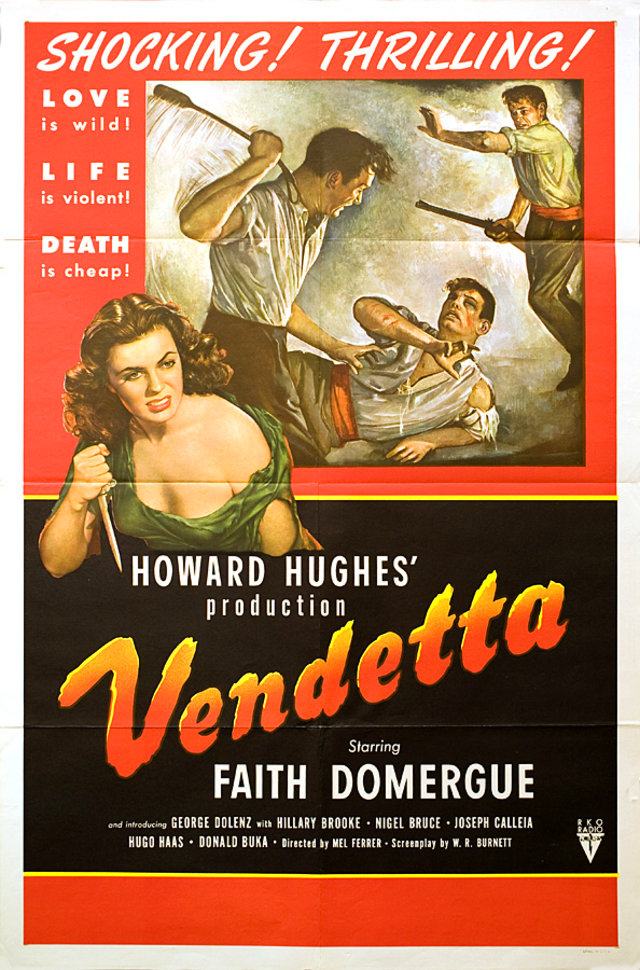
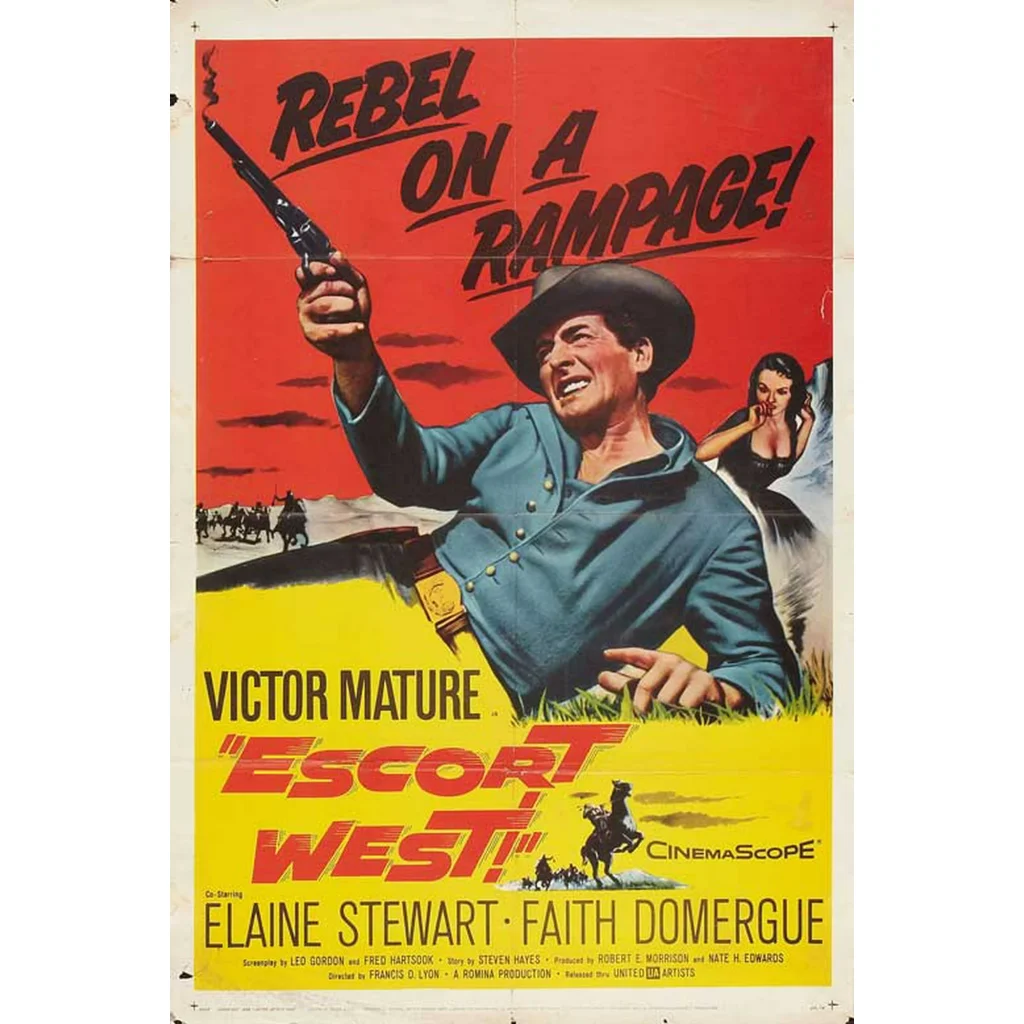
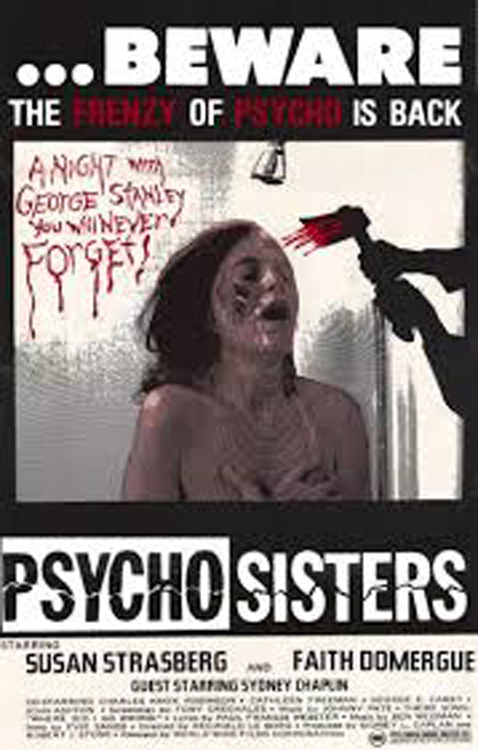
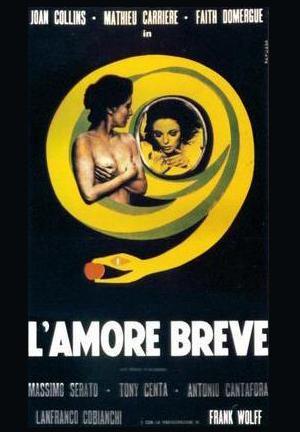
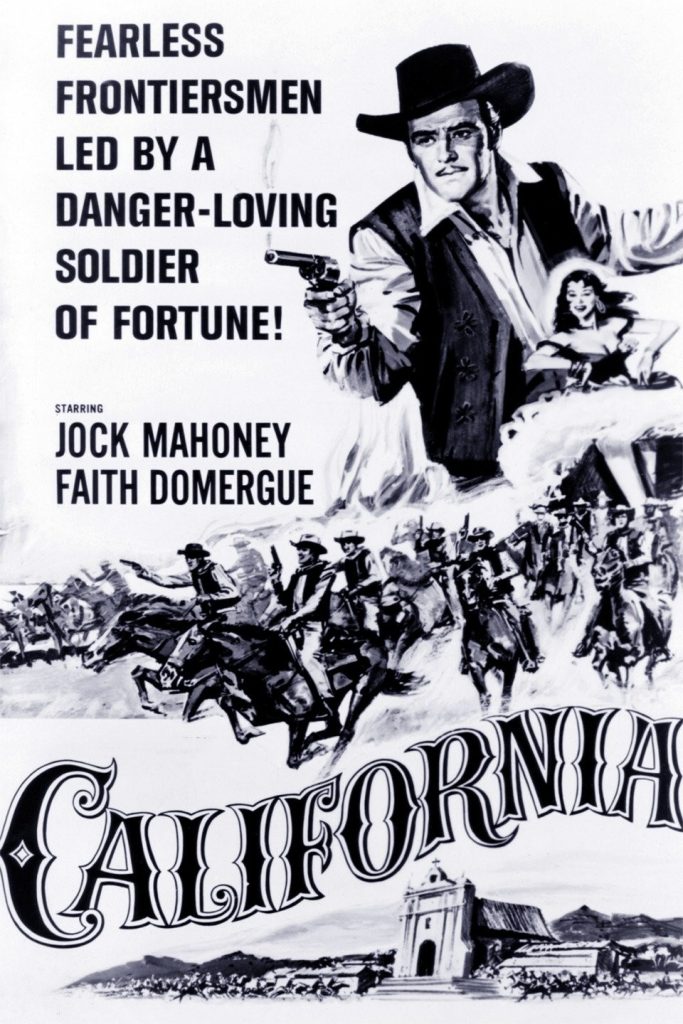
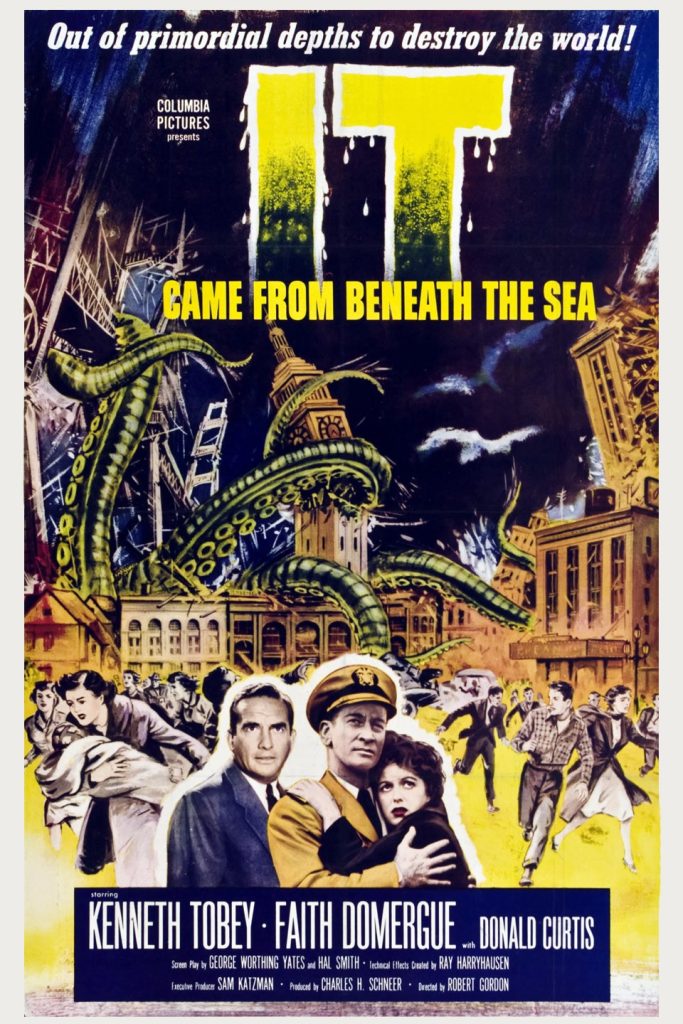
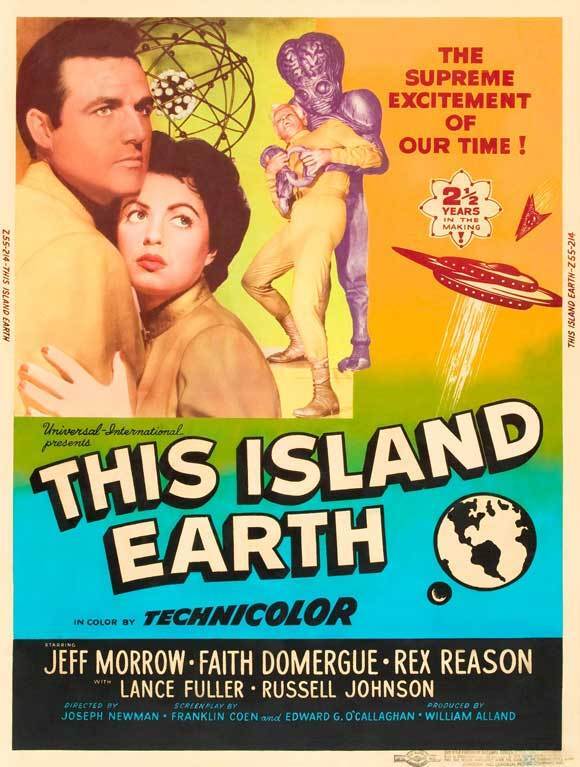
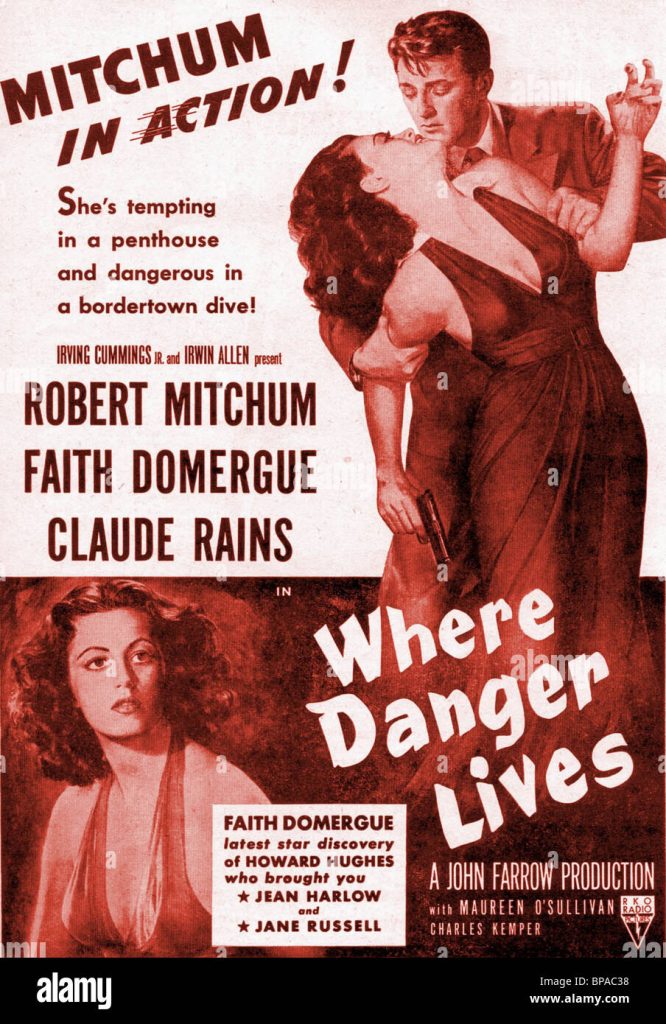
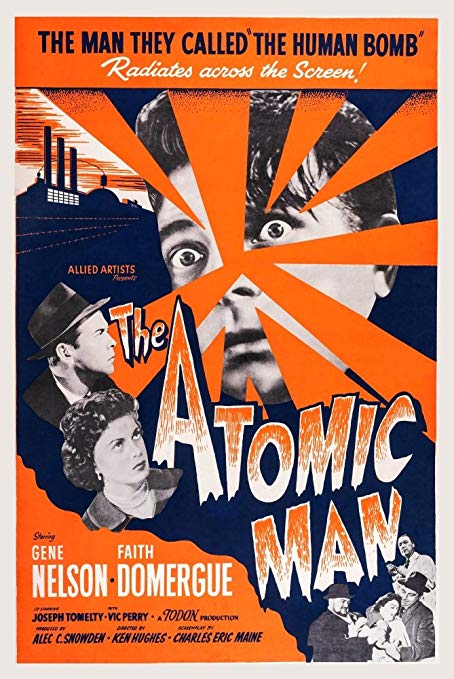
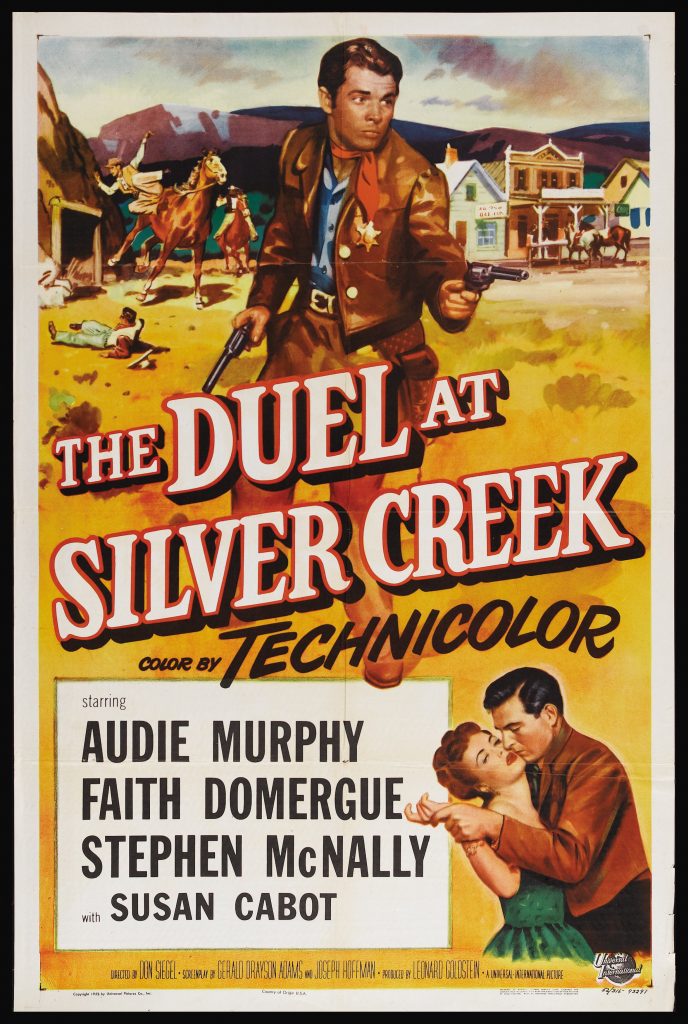
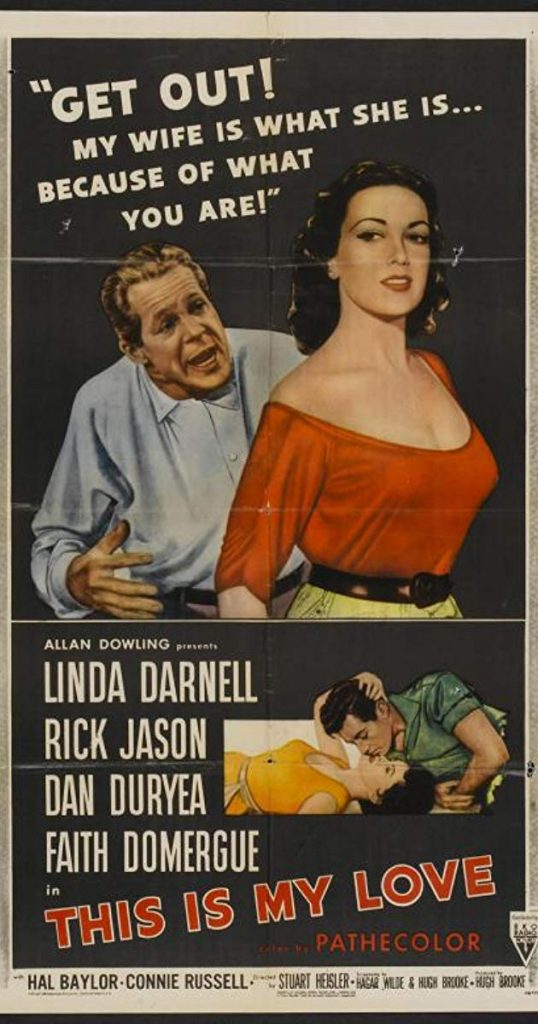
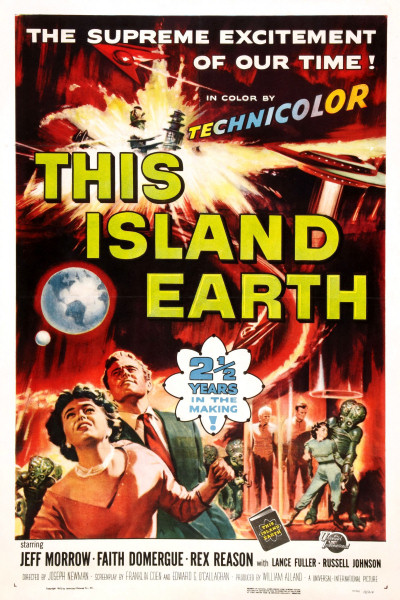
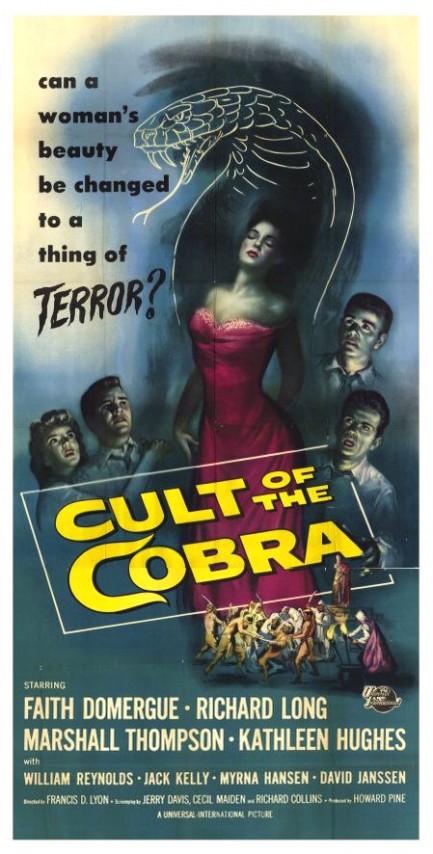
Faith Domergue obituary in “The Independent” in 1999.
Tom Vallance’s obituary of Faith Domergue in May 1999’s “Independent”: MAGNATE Howard Hughes promoted the careers of several film actresses both before and during his tenure as head of RKO Studios, but the two stars in whom he invested most time and money were Jane Russell, who made it to the top, and Faith Domergue, who didn’t. ±§
Hughes nurtured the career of the sultry, dark-haired beauty Domergue for seven years, starting when she was only 16 years old. The first film in which she starred, Vendetta, is one of Hollywood’s legendary disasters, finally released in 1950 four years after starting production, having gone through five directors, including such illustrious names as Preston Sturges and Max Ophuls. The same year that Vendetta opened to damning notices and an indifferent public, Where Danger Lives, in which Domergue co-starred with Robert Mitchum, also did poor business, and Hughes lost interest in his protege.
The exotic actress eventually achieved a fame of sorts, becoming a cult favourite for her roles in science-fiction movies such as It Came From Beneath the Sea, Cult of the Cobra and one of the most notable Fifties sci-fi films, This Island Earth.
Born in New Orleans in 1925, she was the adopted daughter of Annabelle Quimet and Leo Domergue. In the early Thirties the family moved to California, where Domergue attended Beverly Hills Catholic School and St Monica’s Convent School. Shortly after leaving school in 1942, she attended a party aboard Howard Hughes’s yacht, and so impressed him with her striking looks that he signed her to a long-term contract. Over three years of voice, diction and drama lessons followed before he considered her ready for the camera.
After a small one-scene role in Young Widow (1946) starring Jane Russell, Hughes cast her in the leading role in Vendetta. Domergue told Filmfax magazine in 1997,
Howard had formed a company with Preston Sturges called California Pictures and Preston had an idea to do what was then called Colomba (based on the novel by Prosper Merimee). He told Howard that he wanted to do a film with his girlfriend Frances Ramsden and Harold Lloyd called The Sin of
Harold Diddlebock [later retitled Mad Wednesday] and, if Howard would allow Preston to produce and direct that, then Preston would produce Colomba with me. He told Howard, “I will make a star of Faith”, which of course is what Howard wanted to hear.
Sturges chose Max Ophuls to direct Colomba and worked with him on the script, but when shooting started Sturges decided to take over the direction. According to Domergue,
Max would be allowed to say “Action!” and that was it – he was not allowed to say “Cut” or instruct any of the actors. Just before we started shooting Howard had been piloting his plane and had crashed into a house and remained between life and death for weeks, so now Sturges had total control of the company and at this point he lost his bearing. So much hubris came into his actions, this arrogant pride. Actor Nigel Bruce became short- tempered and my leading man George Dolenz wanted to leave. The whole picture was supposed to be for my benefit and here it was all going down the drain.
When Hughes became aware of the situation, the company was dissolved and Sturges and Ophuls dismissed. Stuart Heisler was hired, primarily to shoot close-ups, before the film was temporarily abandoned. Two years later Hughes, having taken over RKO, shot more footage for the film (now retitled Vendetta), then hired Mel Ferrer (who received sole screen credit as director) to shoot six weeks of retakes. In 1947 Domergue had married the director Hugo Fregonese, and on completion of the film went with him to his native Argentina:
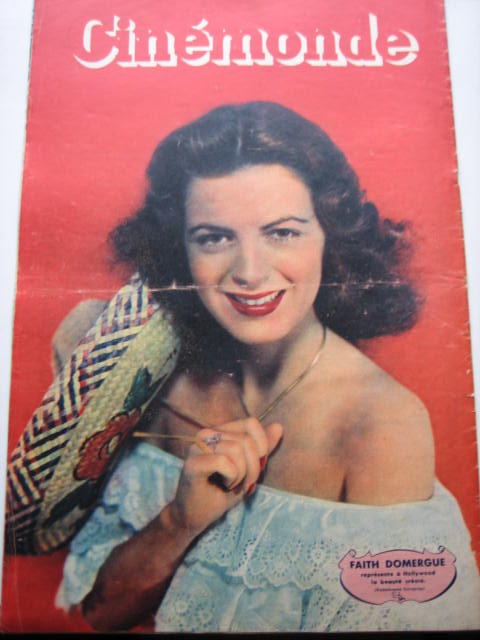
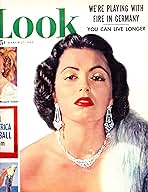
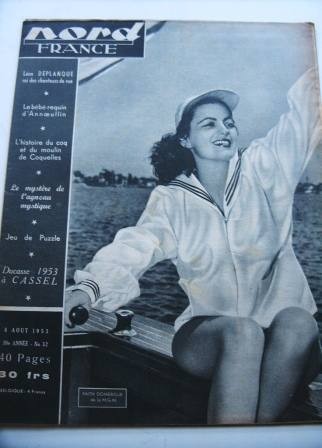
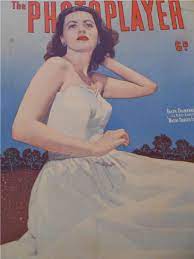
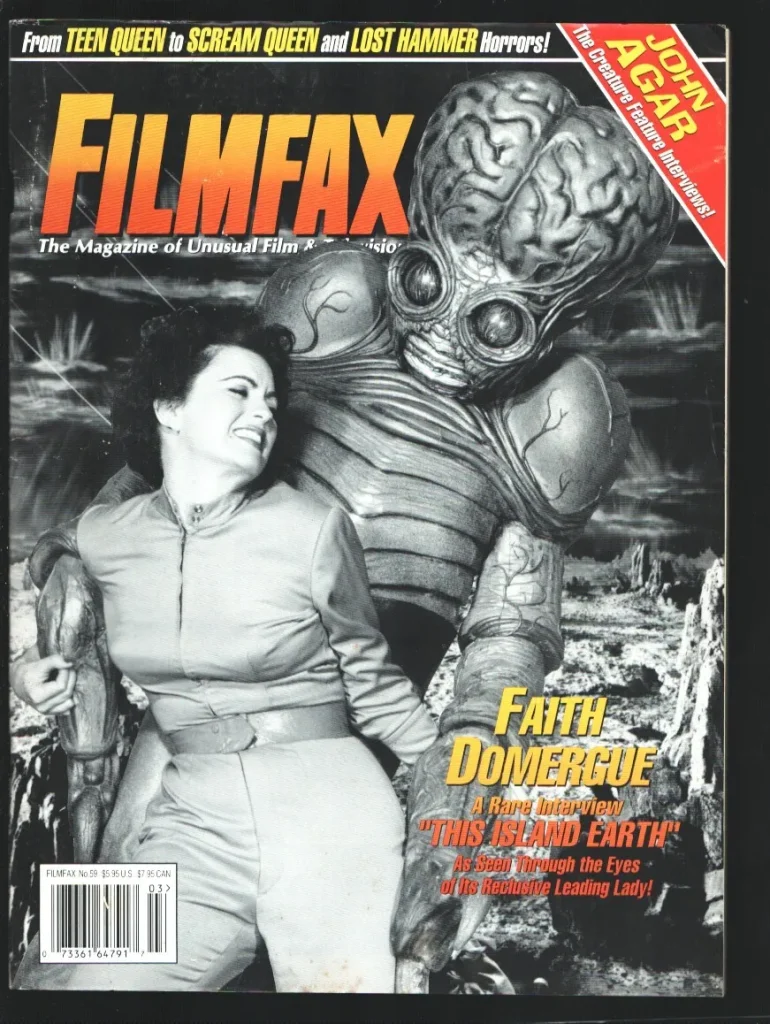
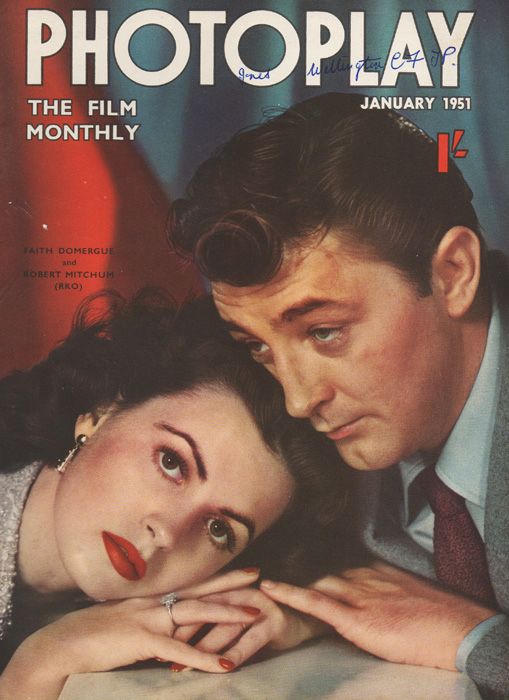
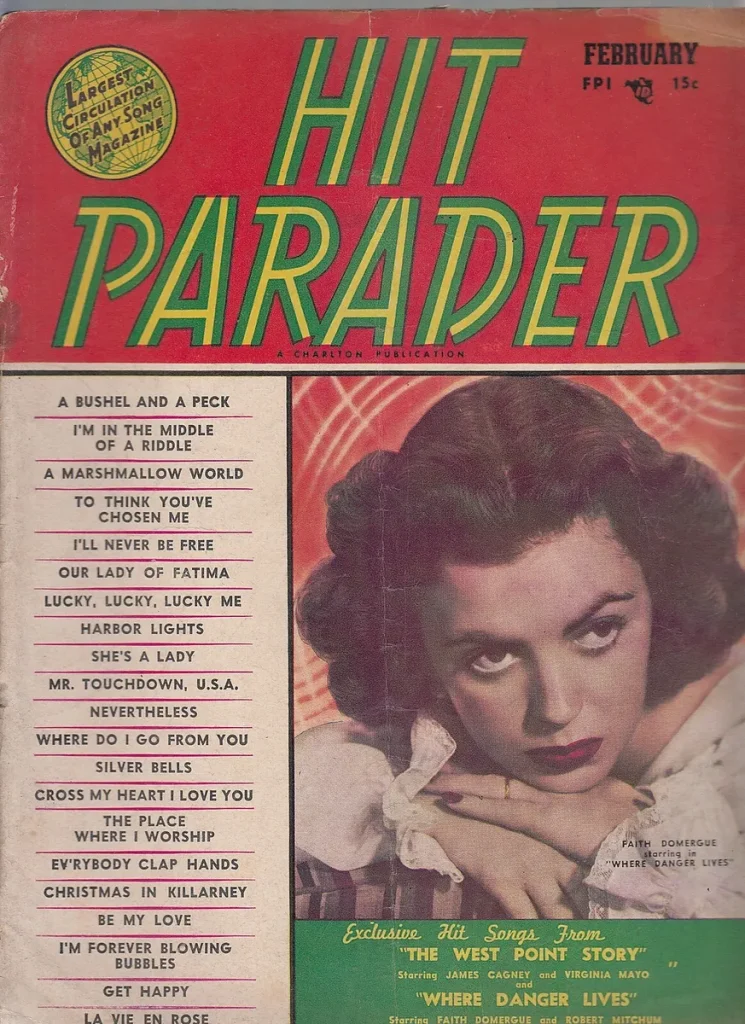
The Vendetta experience was still on my mind – all that time and money wasted. By the time it was all over, I had no drive left, and, to be perfectly frank, I lost my first child because of Vendetta. I had a miscarriage and this was heartbreaking.
Domergue returned to Hollywood when Hughes offered her an RKO contract and the lead in John Farrow’s film noir Where Danger Lives, in which Domergue was a psychotic who lets a doctor (Robert Mitchum) believe he killed her husband when in fact she has smothered him herself. “Robert Mitchum was wonderful,” commented Domergue.
There was a scene where I was to get hysterical and it was difficult for me. After we shot the scene, Robert said to me, “I like you. You don’t know what you’re doing, but you’re in there doing
it with all your heart!” There was an enormous publicity campaign for me after I finished the film. I was on practically every cover of every magazine – 15 pages in Pageant, four pages in Life, the cover of Look – you name it.
Then, with both my films about to open in New York, I told the studio I couldn’t go there because I was tired, angry and pregnant again. Howard phoned me and told me there was a lot of money tied up in the campaign. When I told him I was going to have a baby he said, “OK, goodbye Faith”, and that was the last time I ever heard his voice.
Where Danger Lives opened to lukewarm response, followed by the heavily panned Vendetta, a wordy and turgid melodrama of Corsican vengeance. “It is not a good film,” confessed Domergue,
but we all were quite good. Unfortunately all of the performances that Max and I worked on were out the window. What you see in the final version is bits and pieces of everything – but nothing of what Preston shot at all except a couple of long shots.
Domergue was in three minor movies – Don Siegel’s Duel at Silver Creek (1952), Lloyd Bacon’s The Great Sioux Massacre (1953) and Stuart Heisler’s This is My Love (1954) – and travelled extensively with Fregonese, by whom she had two children, before her most significant year in pictures, 1955, when she starred in This Island Earth, It Came From Beneath the Sea and Cult of the Cobra as well as the western Santa Fe Passage (“I don’t think I had one day off in the whole of 1955!”).
Considered one of the more intelligent science-fiction tales, Joseph Newman’s This Island Earth (partly directed by Jack Arnold when Newman fell ill) featured Domergue as a scientist shanghaied with her colleagues to the alien planet Metaluna to help defend it from invasion. “It has attained more popularity than anything else I’ve done,” said the actress, “though such films are really for the technicians – actors take second place to them and the sets.”
Metaluna was constructed on Universal’s old Phantom of the Opera stage, said to be the biggest in the world, while the film’s giant mutant (which grapples with Domergue on the platform of the spaceship near the film’s climax) showed the make-up expert Bud Westmore and his team at their most imaginative. The film also benefited from being one of the last shot in the three-strip Technicolor process.
Domergue was a scientist again in Robert Gordon’s It Came From Beneath the Sea, helping to destroy a giant octopus (created by Ray Harryhausen, who cut costs by giving his monster six arms instead of eight) which invades San Francisco.
After Santa Fe Passage (“with a wonderful director named William Witney who was the best director I’ve ever worked with”), Domergue was asked to take over the lead in Cult of the Cobra. Universal had started the film with the actress Mari Blanchard but were unhappy with the footage and replaced her with Domergue, who later said, “That film was not a fond memory for me. My marriage to Hugo was breaking up – he was in Europe and I was in Hollywood.” The bizarre tale cast Domergue as leader of an Asiatic cult of snake-worshippers, able to transform themselves into snakes at will. When six GIs photograph a secret ceremony she puts a fatal curse on them, and they are then killed by the exotic snake-lady.
Having divorced Fregonese, Domergue then made three films in England, Ken Hughes’s taut Timeslip (1955), Vernon Sewell’s B-movie thriller Soho Incident (1956) in which she headed a gang of racketeers, and a disappointing crime film, Man in the Shadow (1957). “This period of my life became an active time,” she said, “because I was a single mother with children to support.” Domergue was now living in London and Rome, and in 1966 married the agent Paolo Cossa, subsequently making several Italian films including Una Sull’Altra (1969) with John Ireland and Elsa Martinelli and L’Amore Breve (1970) with Joan Collins. “I had 30 wonderful and cherished years with Paolo,” she said recently, “and I miss him dearly.”
In 1972, a New York publisher announced that he would issue a book by Domergue called My Life with Howard Hughes, stating in Variety that “this will be the first time one of his ladies really talked about the intimate relationship she had”. The book never appeared, and Domergue said two years ago:
I don’t talk much about Howard Hughes. I think it quite sad that it’s the negative side of someone’s life that is so interesting to the public and not the fact that he was one of the great contributors to aeronautics in this country since the beginning of the century. All my memories of Howard are good ones.
Faith Domergue, actress: born New Orleans 16 June 1925; married first Ted Stauffer (marriage dissolved), 1947 Hugo Fregonese (one son, one daughter; marriage dissolved 1955), 1966 Paolo Cossa (deceased); died Santa Barbara, California 4 April 1999.
The above “Independent” obituary can also be accessed online here.


